
伤口世界
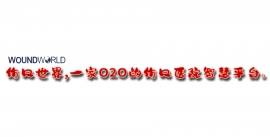
- 星期二, 06 8月 2024
Optimising sleep – simple questions and goals
Sleep quantity, quality and timing are significantly associated with the development of type 2 diabetes and have an impact on glycaemic control and cardiovascular disease risk in those with established diabetes, according to this narrative review in Diabetes Care. The authors are concerned that, although clinicians commonly explore physical activity and diet with people at risk of or with type 2 diabetes, they are less likely to ask about sleep. They outline normal sleep structure, share four simple questions to elicit sleep status and summarise the data supporting the role of sleep within the “5S” framework of 24-hour movement (Sleeping, Sitting, Stepping, Sweating and Strengthening) included in the ADA/EASD consensus report on the management of hyperglycaemia in type 2 diabetes. They also share the evolving evidence base supporting the association between sleep and type 2 diabetes, describe how to assess sleep and manage sleep disorders, and advise on helping people set simple goals. It is hoped this will translate into more clinicians spending time discussing sleep in future.
Pam Brown GP in Swansea
Citation: Brown P (2024) Optimising sleep – simple questions and goals. Diabetes & Primary Care 26: 99–101
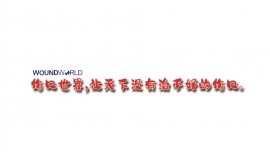
- 星期一, 05 8月 2024
Intermittent fasting for the management of weight and diabetes
Intermittent fasting comprises a variety of dietary patterns in which eating and fasting are cycled over a regular period, with potential benefits in terms of body weight and metabolism. This factsheet covers the definitions, benefits and risks of intermittent fasting, and provides tips for supporting people who wish to adopt these patterns. Most research on intermittent fasting has been conducted in people with overweight or obesity, with or without diabetes. Many healthy-weight people are also interested in these diets; however, in this group, research shows minimal metabolic improvements and, concerningly, reductions in physical activity and lean body mass.1
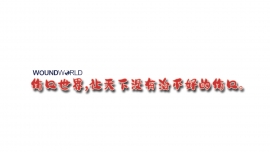
- 星期五, 02 8月 2024
Does the point of healthcare contact affect successful diagnosis of diabetic Charcot neuroarthropathy?
Amy Sherratt, Jennie Hancox, Frances Game and Katie Gray
Citation: Sherratt A, Hancox J, Game F, Gray K (2024) Does the point-of-healthcare contact affect successful diagnosis of diabetic Charcot neuroarthropathy? The Diabetic Foot Journal 27(2): 44–8
Key words
- Charcot
- Diabetes
- Delay
- Foot
- Misdiagnosis
Article points
1. Delays in diagnosis increase the risk of severe long-term foot complications
2. A retrospective audit of patients with active Charcot neuroarthropathy examined the time to diagnosis, misdiagnosis rates, healthcare professional (HCP) and setting type at each contact, since symptom onset prior to their referral to a multidisciplinary foot team (MDFT) clinic
3. Results showed that non-specialist HCPs require a greater degree of awareness and understanding of Charcot neuroarthropathy to reduce diagnostic delays and misdiagnosis rates.
Authors
Amy Sherratt is a Diabetes Specialist and Research Podiatrist, University Hospitals of Derby and Burton & Derbyshire Community Health Services, Derbyshire; Jennie Hancox is a Lecturer at Loughborough University, School of Sport, Exercise and Health Sciences; Frances Game is a Consultant Diabetologist and Director of Research and Development, University Hospitals of Derby and Burton, Derbyshire and Katie Gray is a Diabetes Specialist and Research Podiatrist, University Hospitals of Derby and Burton & Derbyshire Community Health Services, Derbyshire.
Background: Charcot neuroarthropathy (CN) is a lesser-known and commonly misdiagnosed diabetic foot complication. Delays in diagnosis increase the risk of severe long-term foot complications. Aims: To undertake a retrospective audit of patients with active CN, recording the time to diagnosis, misdiagnosis rates, healthcare professional (HCP) and setting type at each contact since symptom onset prior to their referral to a multidisciplinary foot team (MDFT) clinic in a circumscribed part of England. Methods: Clinical notes of 46 consecutive patients attending a MDFT clinic in the East Midlands region of England during a 2-month period, with active CN were assessed. Results: Of the 46 included patients, 22 developed CN while in primary care. These patients had a mean time from symptom onset to confirmed diagnosis of 68 days, with 64% receiving a misdiagnosis. Non-specialist HCPs failed to suspect CN in 85% of contacts compared to 20% in specialist HCPs. Conclusions: Non-specialist HCPs need a greater degree of awareness and understanding of CN to reduce diagnostic delays and misdiagnosis rates.
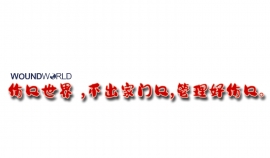
- 星期四, 01 8月 2024
C-reactive protein and the outcomes of diabetes foot ulcer infection
Matthew J Young, Christopher D Jones and Josh Jones
Citation: Young MJ, Jones CD, Jones J (2024) C-reactive protein and the outcomes of diabetes foot ulcer infection. The Diabetic Foot Journal 27(1): 40–3
Key words
- C-reactive protein
- Diabetes foot ulcer infection
- Risk assessment
Article points
1. Retrospective audit to determine if C-reactive protein can be used to establish the optimum point for discharge of patients admitted with diabetes foot infections.
2. Lower discharge CRP values are associated with a lower risk of subsequent adverse events: readmission, amputation or death
3. This needs to be balanced with the detrimental effects of extended hospital admission and excessive antibiotic use.
Authors
Matthew J Young, Christopher D. Jones and Josh Jones; all at Diabetes Foot Clinic, Royal Infirmary, Edinburgh, Scotland, UK
Aims: To determine if C-reactive protein (CRP) can be used to establish the optimum point for discharge of patients admitted with diabetes foot infections. Materials and methods: A retrospective audit of 198 admissions of 105 people with diabetes admitted to and discharged from one hospital from September 2019 to December 2021 with CRP measurements and follow up for 12 weeks. Patients were assessed to determine if they had an adverse outcome: readmission, amputation or death. These outcomes were grouped according to discharge CRP from 5 to 25mg/l. After publicising the findings of the first audit, a second cohort of 58 admissions in 30 patients was used to determine if outcomes could be improved. Results: In cohort one, a total of 56 people were admitted once only and 49 more than once. The median admission CRP was 83 (IQ range 27–196mg/l) and the median discharge CRP was 15 (IQ range 7–38mg/l). Any discharge CRP over 5mg/l was associated with an increased risk of adverse outcome, OR 4.3 (95%CI 1.2–1.9) to 6.6 (CI3.5–6.6) all p=.01, however, patients who were discharged with a CRP of >10mg/l were significantly more likely to be have an adverse outcome, OR 14.4 (CI 6.6–31.4, p<.0001). In cohort two, 18 people were admitted once only and 12 were admitted more than once. The median admission CRP was 99mg/l and on discharge 6mg/l. Using a discharge CRP value of 11 or above mg/l as a cut-off resulted in an odds ratio of 17.9 (95% CI: 4.1–78.0, p=0.0001) for an adverse outcome, readmission or amputatoon. Conclusion: Lower discharge CRP values are associated with a lower risk of subsequent adverse events. However, this needs to be balanced with the detrimental effects of extended hospital admission and excessive antibiotic use. A discharge CRP of <=10mg/l may be a pragmatic balance.
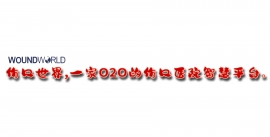
- 星期三, 31 7月 2024
Split-thickness skin graft and intralesional epidermal growth factor for patients with diabetic foot wounds
Bulent M Ertugrul, Saime Irkoren, Ender Ceylan and Oner Savk
Citation: Ertugrul BM, Irkoren S, Ceylan E, Savk O (2024) Split thickness skin graft and intralesional epidermal growth factor for patients with diabetic foot wounds. The Diabetic Foot Journal 27(1): 34–9
Key words
- Diabetic foot
- Epidermal growth factor
- Skin graft
- Wound treatment
Article points
1. Healthy granulation tissue is essential to the success of split-thickness skin grafting
2. Epidermal growth factor (EGF) has a critical role in the angiogenesis and formation of healthy granulation tissue
3. Patients with diabetic foot ulcers treated with EGF had a higher rate of graft survival.
Authors
Bulent M Ertugrul MD is Professor of Infectious Diseases and Clinical Microbiology, University of Adnan Menderes School of Medicine, Aydin, Turkey; Saime Irkoren MD is Associate Professor of Plastic, Reconstructive and Esthetic Surgery, University of Adnan Menderes School of Medicine, Aydin, Turkey; Ender Ceylan MD is Assistant Professor of Plastic, Reconstructive and Esthetic Surgery, University of Adnan Menderes School of Medicine, Aydin, Turkey; Oner Savk MD is Professor of Orthopedics and Traumatology, University of Adnan Menderes School of Medicine, Aydin, Turkey
Split thickness skin grafting (STSG) is a simple surgical technique in wound reconstruction, but various factors including inadequate wound bed preparation may cause partial or total graft loss. Ensuring infection-free healthy granulation tissue is essential before operation. Epidermal growth factor (EGF) has a critical role in angiogenesis and formation of healthy granulation tissue. This study retrospectively investigated the value of intralesional EGF in patients with a chronic foot ulcer due to diabetes who underwent reconstruction with an autologous skin graft. Patients treated with intralesional EGF had a higher rate of graft survival, significantly fewer postoperative complications and reduced hospitalisation times. These results suggest we should undertake a need prospective study of this issue with a larger case series.
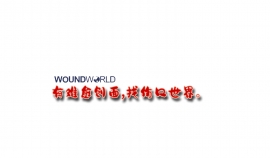
- 星期二, 30 7月 2024
Challenges and opportunities in reducing risk of diabetes-related cardiovascular disease: Making Every Contact Count
Michelle Clapham
Despite recent Government initiatives to reduce rates, the prevalence of type 2 diabetes is expected to continue rising to almost 10% of the population by 2035. Complications of type 2 diabetes, such as cardiovascular disease (CVD), contribute to approximately 22 000 deaths annually in England, indicating a need for population health management through preventative healthcare. The Making Every Contact Count (MECC) initiative recommends the building of preventative strategies into routine primary care appointments to reduce modifiable risk factors associated with both type 2 diabetes and CVD. This article explores the unique opportunities general practice nurses have to promote primary and secondary prevention of CVD.
Citation: Clapham M (2024) Challenges and opportunities in reducing risk of diabetes-related cardiovascular disease: Making Every Contact Count . Diabetes & Primary Care 26: [Early view publication]
Key words
– Cardiovascular disease
– Making Every Contact Count
– Service delivery
– Type 2 diabetes prevention
Author
Michelle Clapham, Lecturer in Adult Nursing, University of Plymouth.
